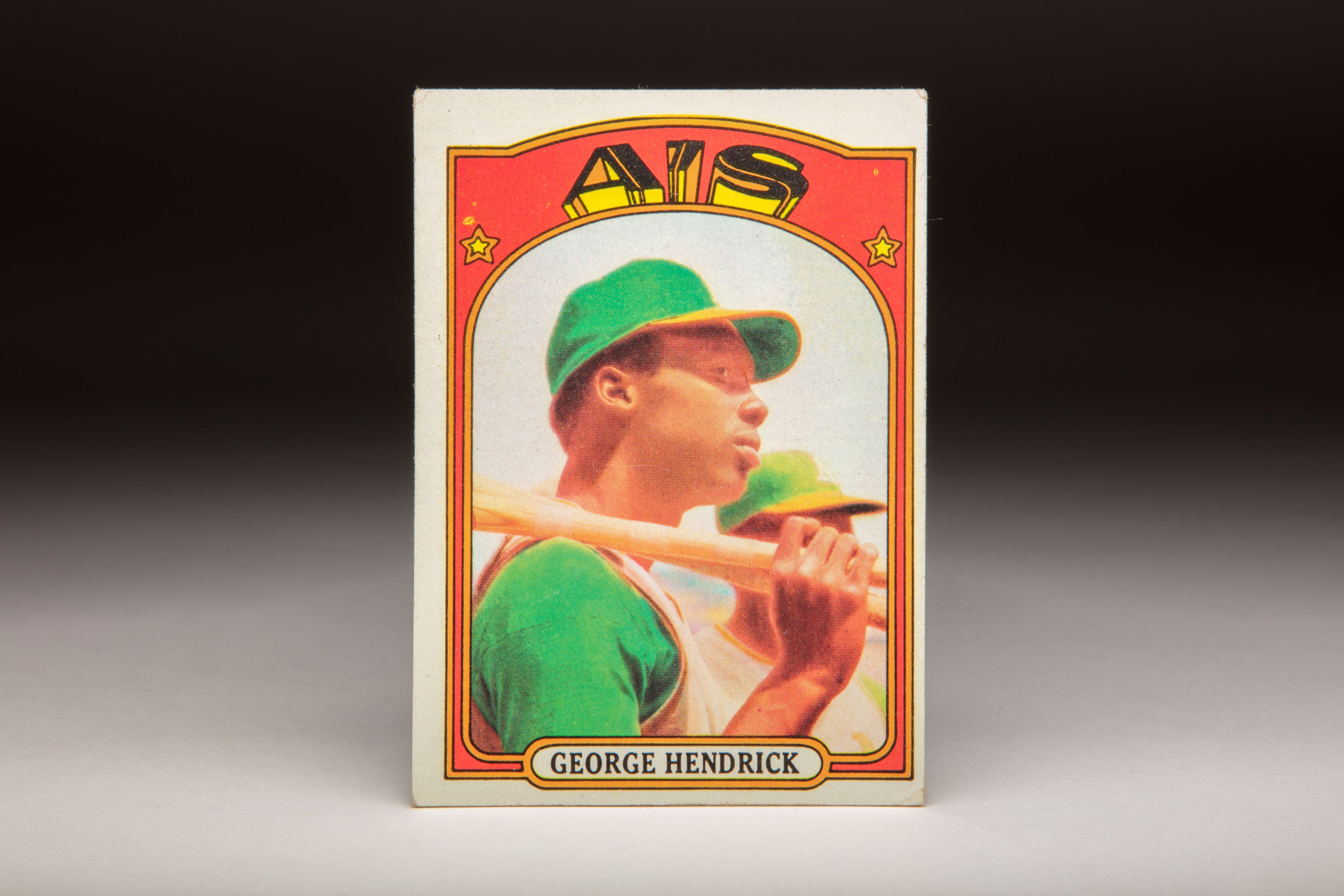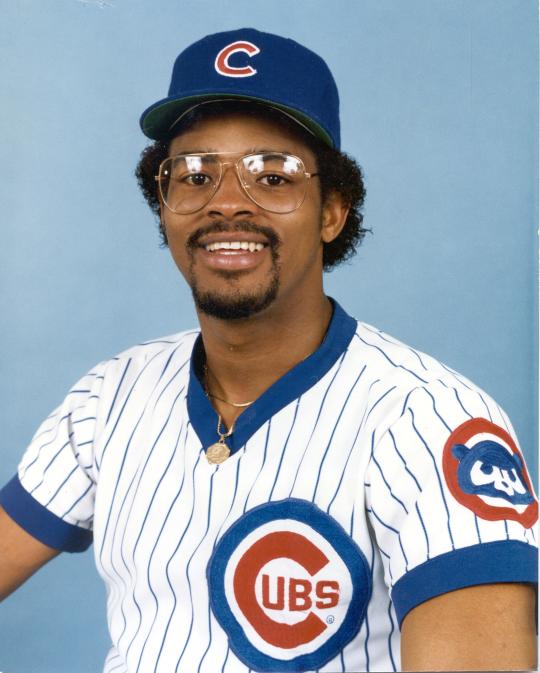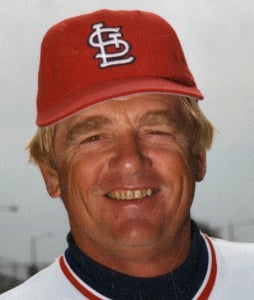- Home
- Our Stories
- #CardCorner: 1984 Topps Leon Durham
#CardCorner: 1984 Topps Leon Durham
When Leon Durham hit Eric Show’s 3-and-1 pitch over the right field wall and into the bleachers at Jack Murphy Stadium on Oct. 7, 1984, the Chicago Cubs had to believe their 38-year World Series drought was about to come to an end.
Durham’s first-inning home run in Game 5 of the National League Championship Series – which sailed almost directly over the Cubs logo on the outfield fence – put Chicago ahead 2-0. By the bottom of the seventh, the San Diego Padres had cut the deficit to 3-2 but had only eight more outs to work with.
That’s when Leon Durham once again took center stage. And this time, a ground ball between Durham’s legs led to the tying run and a San Diego rally that sent the Cubs home for the winter.
Cubs Gear
Represent the all-time greats and know your purchase plays a part in preserving baseball history.
Hall of Fame Membership
There is no simpler, and more essential, way to demonstrate your support than to sign on as a Museum Member.
It marked the high and low points of a career that saw Durham become one of the game’s most consistent power threats.
Born July 31, 1957, in Cincinnati, Durham was a schoolboy star at Woodward High School, playing first base and the outfield and showing uncommon strength with his 6-foot-1 frame that translated into left-handed power. Also a successful pitcher, Durham – who grew up rooting for the Reds – earned all-American honors as a senior.
Taken with the 15th overall pick in the 1976 MLB June Draft by the Cardinals, Durham was described as a “John Mayberry-type hitter” to the St. Louis Post-Dispatch by St. Louis scout Mo Mozzali.
Two weeks after being drafted, Durham signed with the Cardinals and was assigned to St. Louis’ rookie ball club in the Gulf Coast League, where he hit .224 in 44 games. He began the 1977 season with Gastonia of the Western Carolinas League, where he hit .368 in 63 games before earning a promotion to Class A St. Petersburg of the Florida State League, where he batted .287 in 63 more games.
In 1978, Durham – already tagged with the nickname “Bull” – continued his ascent through the Cardinals’ system at Double-A Arkansas, where he hit .316 with 12 homers and 70 RBI in 102 games to earn the first base spot on the Texas League All-Star team. The Cardinals invited Durham to Spring Training in 1979, but he was sent back to the minors toward the end of camp, this time landing with Triple-A Springfield.
With Springfield, Durham hit .310 with 23 home runs, 88 RBI, a .400 on-base percentage and 16 stolen bases to stamp himself as one of the game’s top prospects. He was named the American Association’s Rookie of the Year and was also selected to the league’s All-Star team as an outfielder.
Durham hit .447 in Spring Training in 1980, leading the Cardinals with three homers and 13 RBI before being sent to Triple-A Springfield. Cardinals manager Ken Boyer reportedly campaigned for Durham to come north with the big club but was overruled by management.
“Don’t be surprised if he’s wearing a Cardinal uniform for the next 15 years,” Boyer told The New York Times during Spring Training.
But Boyer’s glowing assessment was not enough to convince Cardinals general manager John Claiborne.
“If he played regularly, there would be no argument about his staying,” Claiborne told the Associated Press, noting that Keith Hernandez at first base and corner outfielders Bobby Bonds (left) and George Hendrick (right) left Durham with no regular spot for game action.
Back at Springfield, Durham hit .258 with five homers and 23 RBI in 32 games before being recalled to St. Louis in May. By that time, the Cardinals were buried deep in the National League East – and Boyer was dismissed a few weeks later in favor of Whitey Herzog.
Durham steadily earned more playing time as the summer went on, helping rally the Cardinals from a 5-0 deficit to an 8-6 win with a two-run, ninth-inning double in the first game of a doubleheader against the Cubs on June 28. He then made a key defensive play at first base in the bottom of the frame to preserve the victory.
“This was a great game to win,” Ted Simmons told the St. Louis Post-Dispatch. “Bull put us ahead and then he made a big league barehand stop.”
The next night, Durham hit the first of his 147 big league homers. He would end the year batting .271 with eight homers and 42 RBI in 96 games, finishing seventh in the NL Rookie of the Year Award balloting.
But Herzog – who was also serving as the Cardinals’ general manager – was ready to radically reshape the roster and considered few players untouchable in trades. On Dec. 9, 1980, Herzog traded Durham, Ken Reitz and Ty Waller to the Cubs in exchange for Bruce Sutter – a deal that would play a major role in the Cardinals’ 1982 World Series championship.
“If he played regularly, there would be no argument about his staying,” Claiborne told the Associated Press, noting that Keith Hernandez at first base and corner outfielders Bobby Bonds (left) and George Hendrick (right) left Durham with no regular spot for game action.
Back at Springfield, Durham hit .258 with five homers and 23 RBI in 32 games before being recalled to St. Louis in May. By that time, the Cardinals were buried deep in the National League East – and Boyer was dismissed a few weeks later in favor of Whitey Herzog.
Durham steadily earned more playing time as the summer went on, helping rally the Cardinals from a 5-0 deficit to an 8-6 win with a two-run, ninth-inning double in the first game of a doubleheader against the Cubs on June 28. He then made a key defensive play at first base in the bottom of the frame to preserve the victory.
“I hate to give (Durham) up,” Herzog told the Post-Dispatch. “Durham is one of the top five prospects in the game. You don’t see many people who come along like Bull Durham, a big man who can run and he hustles.”
The Cubs wasted no time putting Durham in the lineup as he made his Chicago debut as the team’s Opening Day right fielder in 1981. After a slow start, Durham put together an 11-game hitting streak in late May and was hitting .312 when a right hamstring pull sidelined him until games resumed in August after the strike. A late-season slump dropped what had been a .323 batting average on Sept. 12 down to .290 at the end of the season, but Durham – despite having to cede his preferred position of first base to Bill Buckner – still finished with 10 homers, 35 RBI and 25 steals.
“He’s got a chance to be outstanding,” Cubs manager Joey Amalfitano told Field News Service. “He can hit, hit with power, run, play defense. He is what you call a live player.”
In 1982, Durham fulfilled his potential by hitting .312 with 168 hits, 33 doubles, seven triples, 22 homers and 90 RBI to go with 28 steals. Splitting time between right field and center field, Durham was named to his first All-Star Game, won a Silver Slugger Award and finished third in the NL batting race.
“What happened last year was great but I’ve got to do better,” Durham told the Tennesean during the spring of 1983. “In the majors, you can never be sure of anything because there is always someone younger waiting to take your job away.”
Durham started the 1983 season in center field before moving to left. Nagging back and hamstring injuries limited him to nine games in June and only five in September, but he still earned his second All-Star Game selection and finished with 12 homers, 55 RBI and a .381 on-base percentage in 100 games.
Then in 1984, the Cubs moved Durham to first base – part of a series of maneuvers that resulted in the franchise’s first trip to the postseason since 1945. Durham hit .279 with 23 homers, 96 RBI, 84 runs scored and 16 steals as Chicago’s regular cleanup hitter. The Cubs won the NL East by six-and-a-half games over the Mets and faced the Padres in the National League Championship Series.
“Other than making it to the majors, nothing comes close to this,” Durham told the Cincinnati Enquirer at the start of the NLCS. “When I came over here, all I wanted to do was help establish a winning attitude. They had been losing here for a long, long time.
“When I got here, I had to be careful not to try to take it all on myself. Everything has worked out fine. (General manager) Dallas Green went out and got the talent we needed to put it all together – and we have put it all together.”
The Cubs won the first two games of the NLCS by a combined score of 17-2 and appeared headed to a sweep as the series moved to San Diego. But after the Padres won Game 3 7-1, the Cubs rallied to tie Game 4 at 5 heading into the bottom of the ninth – with Durham’s homer in the fourth inning giving Chicago a short-lived 3-2 advantage.
But in the bottom of the ninth, Steve Garvey’s two-run homer off Lee Smith gave San Diego a win – sending the series to a decisive Game 5.
After Durham’s first-inning home run electrified the Cubs’ fanbase, Chicago ace Rick Sutcliffe cruised into the bottom of the sixth inning with a 3-0 lead before San Diego rallied for two runs. Then in the bottom of the seventh, Carmelo Martínez drew a leadoff walk and advanced to second on a sacrifice bunt by Garry Templeton.
Padres manager Dick Williams sent up Tim Flannery to pinch hit for pitcher Craig Lefferts, and Flannery hit a ground ball right at Durham – who was in perfect fielding position but could not prevent the ball from going through his legs. Martínez scored to tie the game, and a single by Alan Wiggins, a double by Tony Gwynn and another single by Garvey chased Sutcliffe and gave the Padres a three-run lead.
Durham’s fly out off Goose Gossage was the first out of the ninth inning that ended with San Diego winning 6-3 to advance to the World Series.
“I was anticipating a hop and it just stayed flat,” Durham told the Fort Worth Star-Telegram. “It didn’t come up or nothing.”
But despite the heartbreaking playoff result, Durham’s career still appeared to be on the rise. Entering his age-27 season, Durham asked for a record $1.1 million in arbitration but settled for $800,000 when the arbitrator ruled in favor of the Cubs. In a career-high 153 games in 1985, Durham hit .282 with 32 doubles, 21 homers and 75 RBI to go along with an NL-best 24 intentional walks. But the Cubs fell to 77-84 and fourth place in the NL East.
In January of 1986, Durham and the Cubs agreed to a three-year contract worth a reported $3 million. Over the next two seasons, Durham produced consistent numbers – hitting .262 with 20 homers and 65 RBI in 1986 and then following that with 27 homers, 63 RBI and a .273 batting average in 1987. But the Cubs were unable to replicate their 1984 magic in either of those seasons.
On May 19, 1988 – with Durham hitting .219 with three home runs and six RBI in 24 games – the Cubs sent their first baseman to the Reds along with an undisclosed amount of cash in exchange for pitcher Pat Perry. By the time the deal was made, Durham – who at the time ranked eighth in Cubs history with 138 home runs – had been reduced to a pinch-hitting role.
“I had some good years, and I had a great time here,” Durham, who still lived in Cincinnati during the offseason, told the Chicago Tribune. “But it’s a blessing trade for me. I’ll tell you, these last few days (of not playing regularly) have been tough.
“I’m going home now.”
The trade opened up a spot for a young Mark Grace in Chicago, and the Reds had visions of Durham providing protection in the batting order for Barry Larkin and Eric Davis. But ongoing back problems and limited Durham to just 21 games with the Reds – and Cincinnati did not bring him back when his contract expired at the end of the season.
Durham returned to his original team when hooked on with the Cardinals in 1989, and he spent the first part of the season with Triple-A Louisville before being recalled in June. But after appearing mostly as a pinch hitter and posting a .056 batting average in 29 games, Durham was suspended for 60 days in September for failure to comply with MLB’s drug policy.
Durham would play in the minors in 1990 and 1995, the Mexican League in 1991 and 1994 and the independent St. Paul Saints in 1993-93. But he would never again appear in a big league game.
After going through substance abuse rehabilitation, Durham returned to the game as a minor league hitting instructor in the late 1990s. He made it back to the majors as a hitting coach with the Tigers in 2017.
Over 10 big league seasons, Durham hit .277 with a .356 on-base percentage, 147 home runs, 530 RBI and 106 stolen bases. For a generation of Cubs fans, he was part of a team that returned hope to Wrigley Field.
“Leon’s got the drive of Pete Rose,” Cubs general manager Dallas Green told the Tennesean in Spring Training of 1983. “He’s that kind of ballplayer. You build your ballclubs around the Leon Durhams.”
Craig Muder is the director of communications for the National Baseball Hall of Fame and Museum
Related Stories
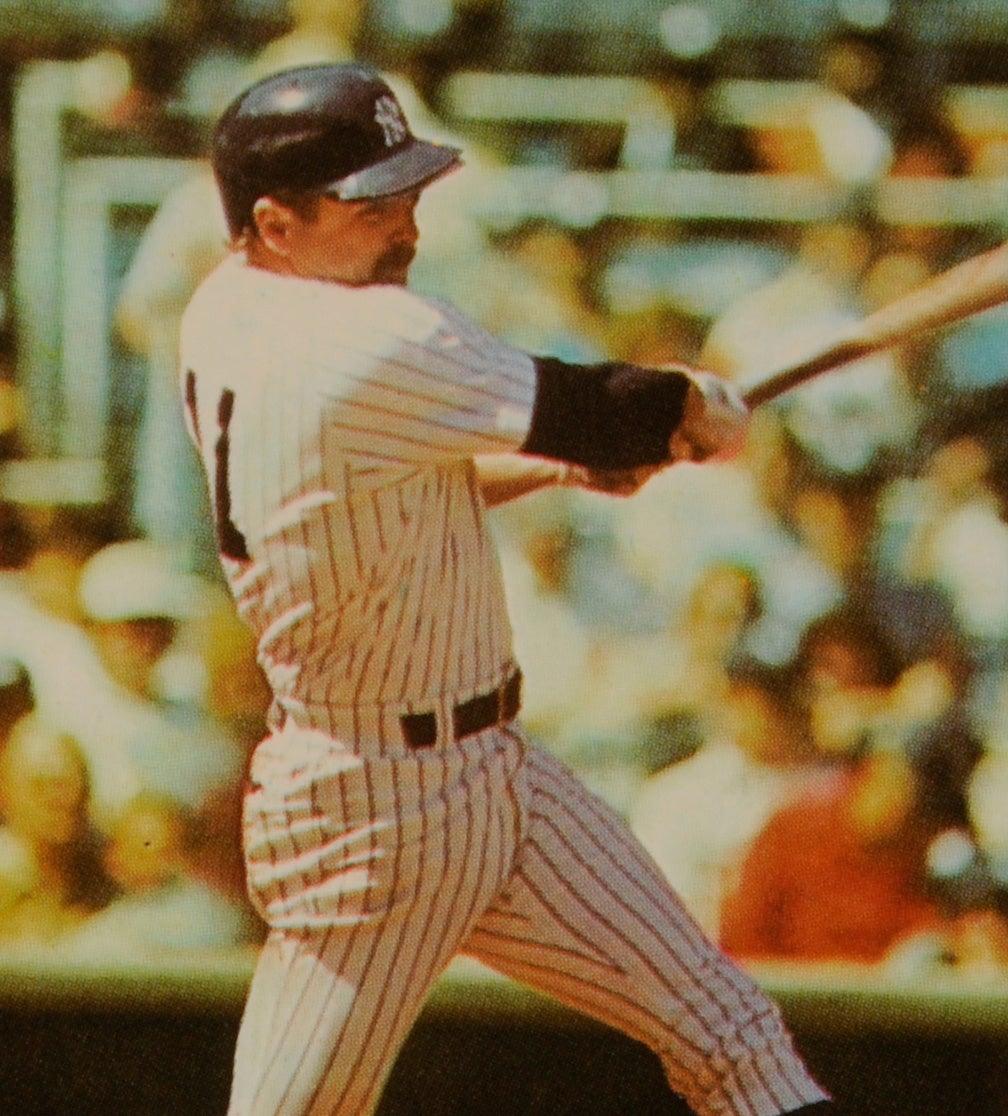
#CardCorner: 1984 Topps Toby Harrah
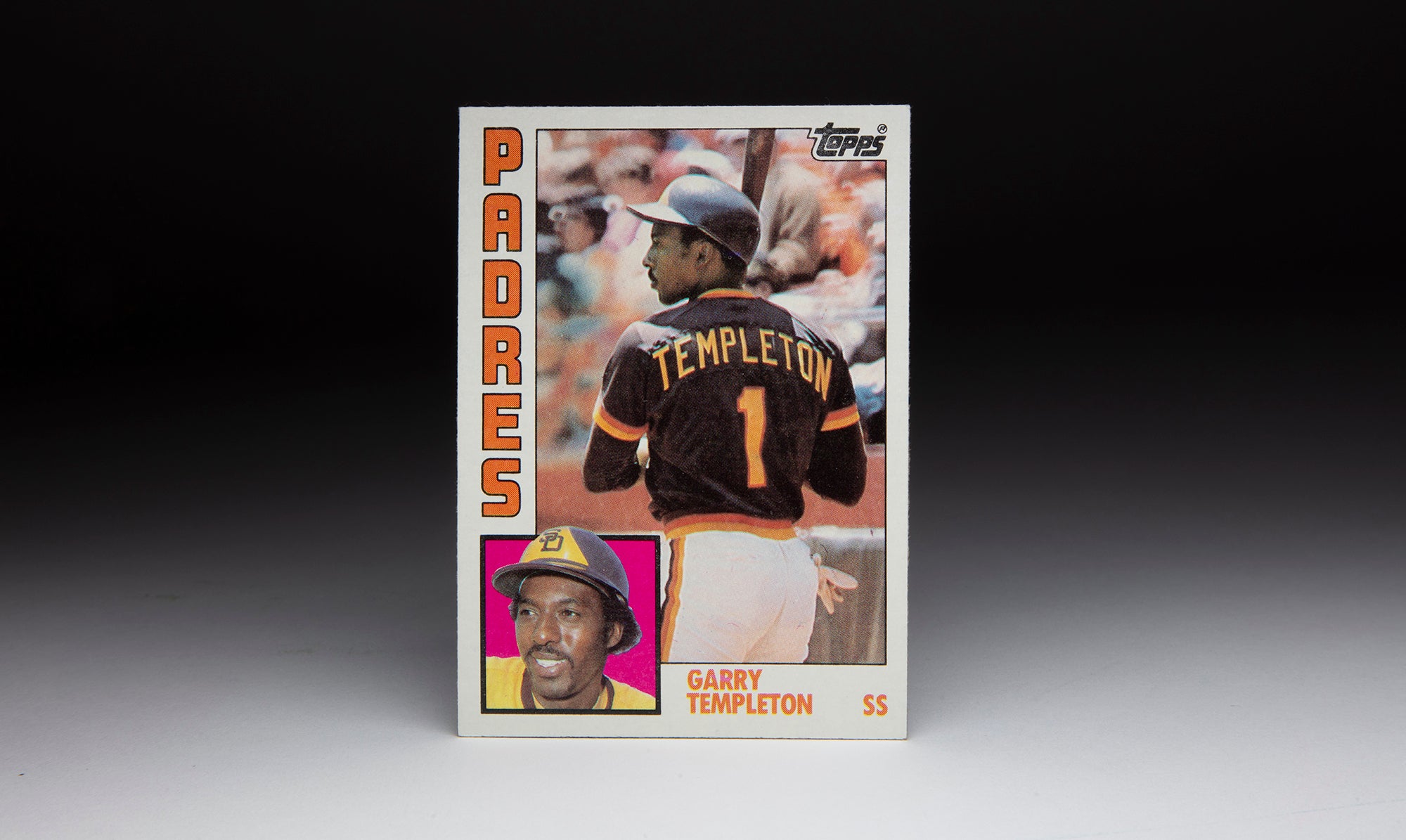
#CardCorner: 1984 Topps Garry Templeton

#CardCorner: 1984 Topps Rusty Staub
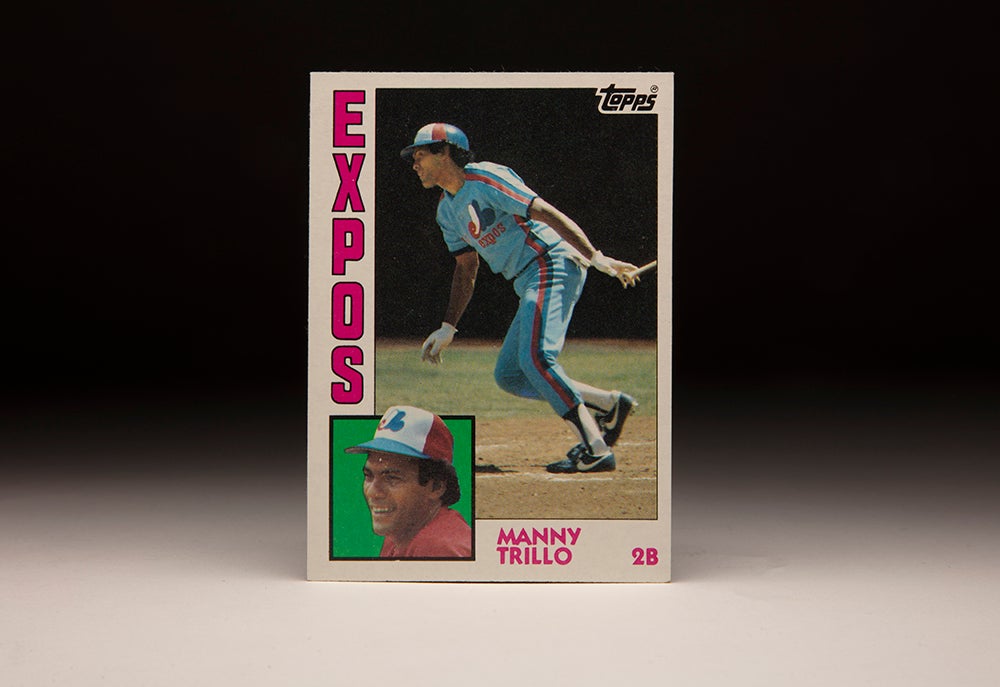
#CardCorner: 1984 Topps Manny Trillo
